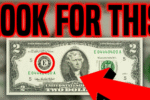Rare Bicentennial Quarter: In the fascinating world of coin collecting, extraordinary finds often emerge from the most unexpected places. Recently, the numismatist field has been abuzz about a rare 1976 Bicentennial quarter that is reportedly worth $11 million. What makes this discovery even more remarkable is that this highly valuable coin may still be in circulation in everyday transactions.
Could your next coffee purchase or grocery shopping include a piece of American history worth millions of dollars? Let’s explore the story behind this rare quarter, why it’s so valuable, and how you can identify it in your loose coins.
Significance of the Bicentennial Quarter
The Bicentennial quarters were minted in 1975 and 1976 to commemorate the 200th anniversary of the United States Declaration of Independence. Unlike standard quarters, these coins feature a dual date – “1776-1976” – and a distinctive reverse design by Jack L. Ahr, depicting a colonial drummer and a torch of victory. This unique image replaced the traditional eagle design, making the Bicentennial quarters instantly recognizable.
While millions were produced, most of them are only worth their face value or slightly more to collectors. However, in extremely rare circumstances, certain errors or anomalies can raise a quarter’s value to staggering heights.
Why is this special quarter worth $11 million?
Most Bicentennial quarters are common, but the quarter worth $11 million stands out because of several exceptional factors:
1. A rare mint error
This is believed to be a flawed coin that may have been struck on the wrong planchet. Some numismatic experts believe it may have been inadvertently struck on a planchet meant for a silver dollar and, therefore, may be of unusual size and weight. “Mint errors of this magnitude are extremely rare and are considered highly valued by collectors.
2. Unusual metal composition
While some Bicentennial quarters were minted in 40% silver for collectors, this particular coin is rumored to have an even more unusual composition — possibly containing pure silver or traces of gold. Such anomalies significantly increase its numismatic value.
3. Exceptional condition
The grading of the coin plays an important role in determining value. This quarter is reported to be in “MS-68” condition, meaning it is nearly flawless and has no signs of wear. Coins in such pristine condition, especially with a unique error, can fetch astronomical sums at auction.
Could this million-dollar quarter still be in circulation?
That the $11 million coin could still be in circulation is the stuff of dreams for both collectors and casual finders. Since billions of Bicentennial quarters were produced, It’s natural to assume that a flawed coin would have survived the quality control process and into circulation.
James Halvorson, a numismatist with the American Numismatic Association, explains that, “In the 1970s, there wasn’t an incredible amount of quality control, and things like this went smoothly. It was a misplaced strike, like some others, that could easily have ended up in a person’s pocket and gone unnoticed for decades.”
How to Identify an $11 Million Bicentennial Quarter
If you’re checking your extra coins, here’s what you should look for:
- Dual date “1776–1976” – All Bicentennial quarters have this feature, so it alone doesn’t indicate rarity.
- Drummer Boy reverse design – The colonial drummer with torch is standard for these coins.
- No visible wear – A coin in near-perfect condition (MS-65 or above) is more likely to be valuable.
- Unusual weight or metal – A standard quarter weighs 5.67 grams; any deviation could indicate a mint error.
- Striking errors – Look for double strikes, misaligned images, or off-center designs.
- Mint marks – Coins without a mint mark (Philadelphia) or with rare errors may be more valuable.
What to do if you think you’ve found this coin
If you think you’ve found this rare coin, follow these steps:
- Handle it carefully – Avoid cleaning or polishing the coin, as this can damage its surface and reduce its value.
- Weigh it – Use a digital scale to check whether it matches the standard quarter weight (5.67 grams).
- Check it for magnification – Check for any irregularities in the strike or design.
- Get it professionally graded – Submit the coin to a reputable grading service like PCGS or NGC.
- Consult an expert – A trusted coin dealer or auction house can provide an accurate appraisal.
The Growing Popularity of Coin Collecting
There has been a general rise in interest in coins of all kinds, especially among younger members of society. Interest has increased with viral videos of rare coins selling for millions on social media platforms like TikTok and YouTube. Search trends on Google show that searches like “valuable quarters in circulation” have increased by 140 percent in the past year.
According to a 2024 U.S. Mint report, currently 1 in 50 Americans have been asked to find a dime in their pocket. Credit: Whether for profit purposes or a fascination with history, treasure hunting is as popular today as it has been in years across the country.
Final Thoughts
The possibility of finding an $11 million Bicentennial quarter hidden in circulation is an exciting thought for collectors and amateur hunters. The odds are low, but the thrill of discovering a rare piece of history helps keep the search alive. So the next time you’re given a quarter in change, take a closer look – you might be holding a small sum of money between your fingers.





